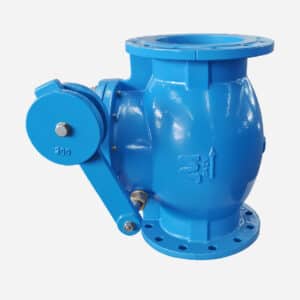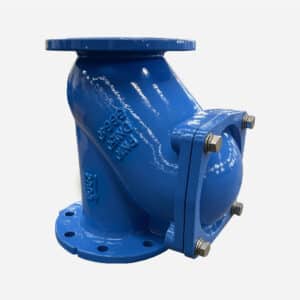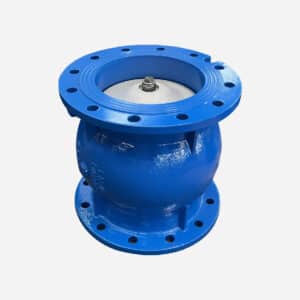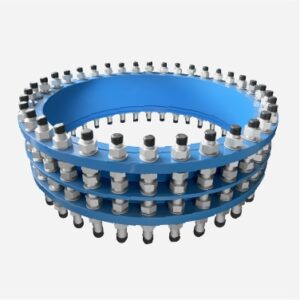Tilting Disc Check Valve
Tilting disc check valve is a check valve that uses a tilted disc to control the flow direction of the fluid to prevent backflow.
FEATURE
● Size from DN100-DN3000
● Length according to BS5155 /DIN3202-F4
● Pressure PN10/PN16/PN25/PN40
● Resilient seated and metal seated
● Material ductile iron body
● Sealing SS304 and EPDM
● with lever & weight
● Hydraulic damping device can further slow down the closing speed
Use
● Water

TILTING DISC CHECK VALVE DIAGRAM
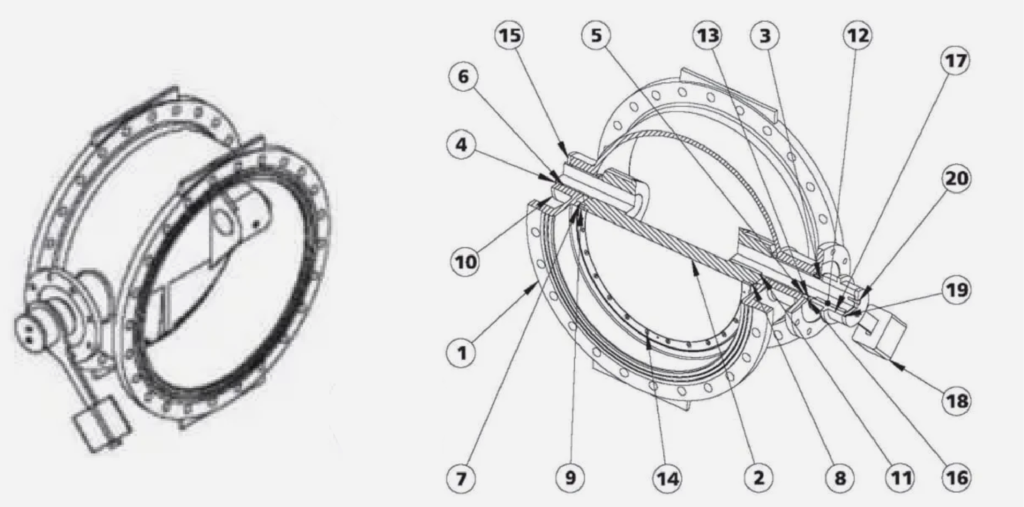
MATERIAL
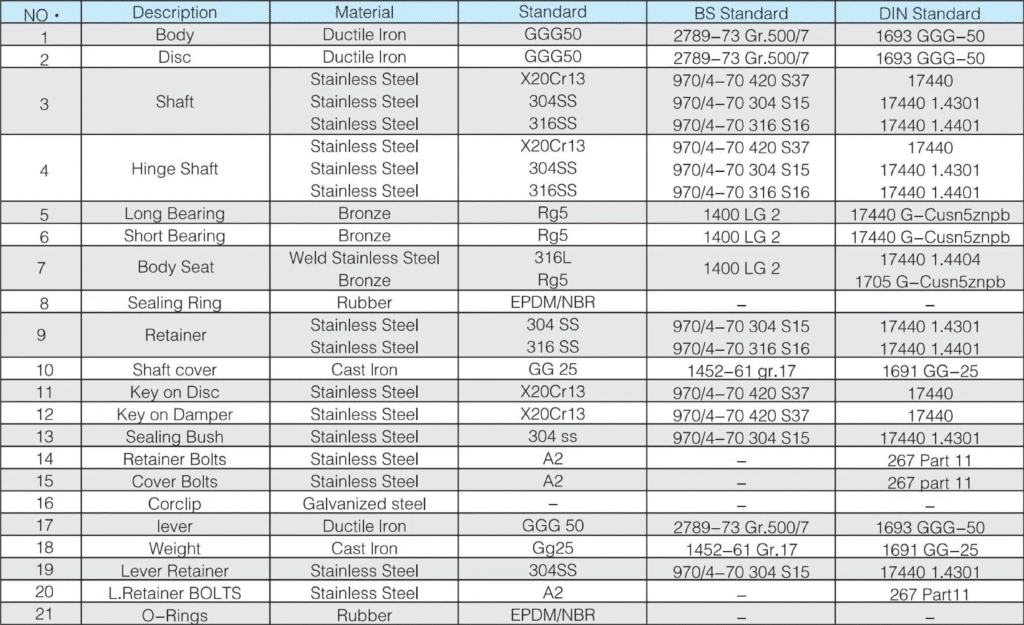
DIMENSION
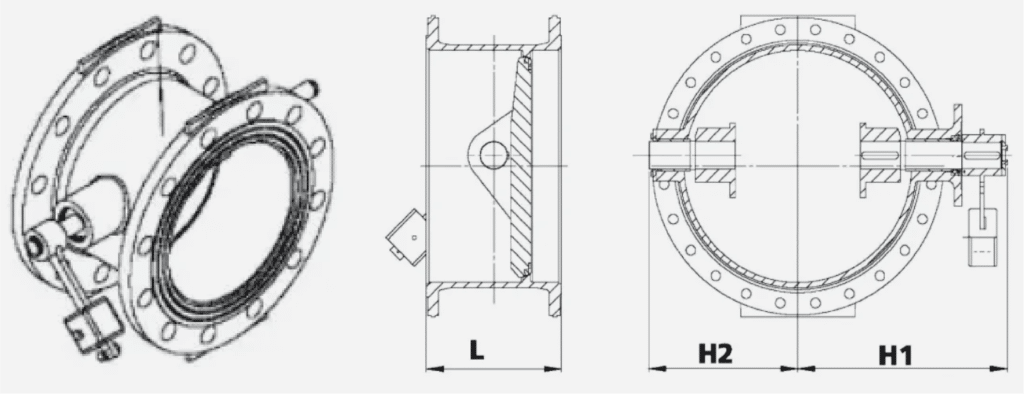
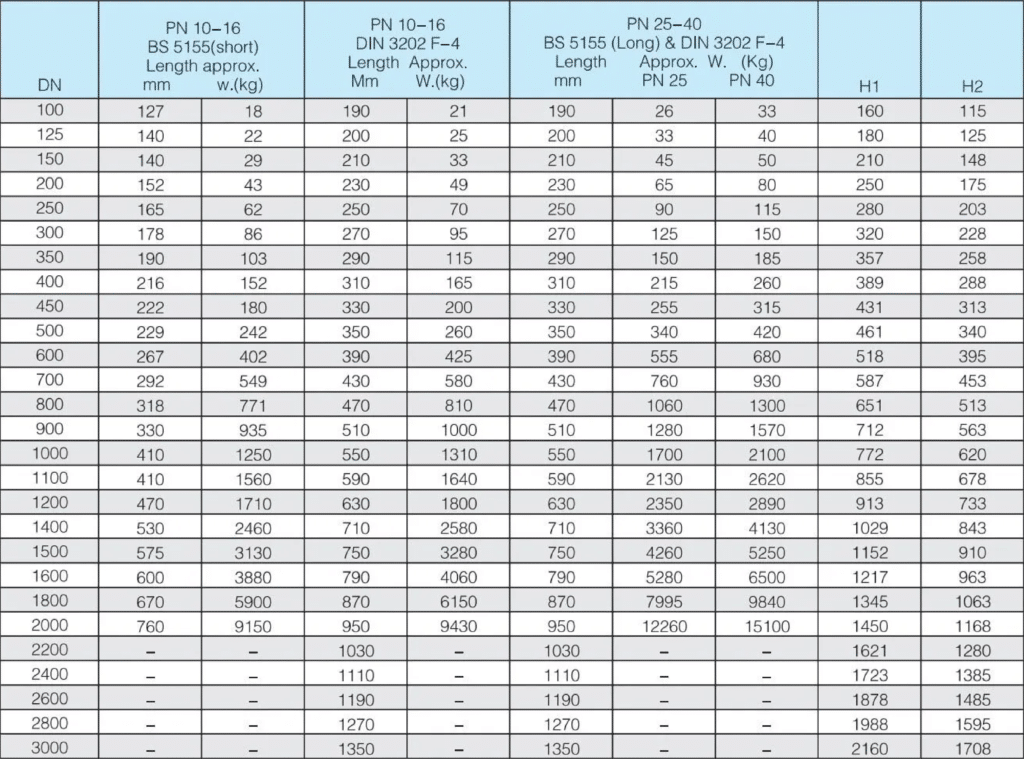
PARTS
Main parts are as below
VALVE BODY
Typically made of cast iron, cast steel, or stainless steel, etc. with inlet and outlet flanges connections for installation in the pipeline.
DISC
The main moving part made of stainless steel or other corrosion-resistant materials, installed on a tilted shaft.
SHAFT
Supports the disc and allows it to rotate or tilt freely to open or close the valve.
SEAT RING
Installed inside the valve body, contacts the disc to form a seal to prevent fluid leakage.
SPRING (SOME MODELS MAY HAVE)
Assists the disc to return to the position, ensuring the valve remains closed when there is no fluid pressure.
WORKING PRINCIPLE
FORWARD FLOW
_
When the fluid flows from the valve inlet to the outlet, fluid pressure pushes the disc open, allowing the fluid to pass through the valve.
At this time, the disc rotates and tilts on the tilted shaft to open the valve.
Tilting disc check valves can be used in pipelines which dislike water hammer.
PREVENTING BACKFLOW
_
When the fluid flows in the reverse direction, i.e., from the valve outlet to the inlet, fluid pressure acts on the disc to push it closed.
Because the disc is installed at an angle, the pressure of the backflow fluid will quickly close it, sealing it on the seat ring and preventing backflow.pipelines which dislike water hammer.
Judberd’s tilting check valve is modified from a horizontally installed double eccentric flanged butterfly valve.
The lever and weight are added to the valve stem of the double eccentric flanged butterfly valve. When the pressure of the water flow is greater than the opening pressure, the valve disc opens under the pressure of the water flow.
If the water flow pressure stops or decreases, the valve disc closes because of Self-gravity, but because of the lever and weight, the valve disc closes slowly, thus avoiding the generation of water hammer.
If we want to further slow down the closing speed of the valve disc, we can also assemble the hydraulic damping device, the oil pressure in it can further slow down the closing of the valve disc, so as to achieve the effect of slow closing.
Tilting disc check valves can be used in pipelines which dislike water hammer.
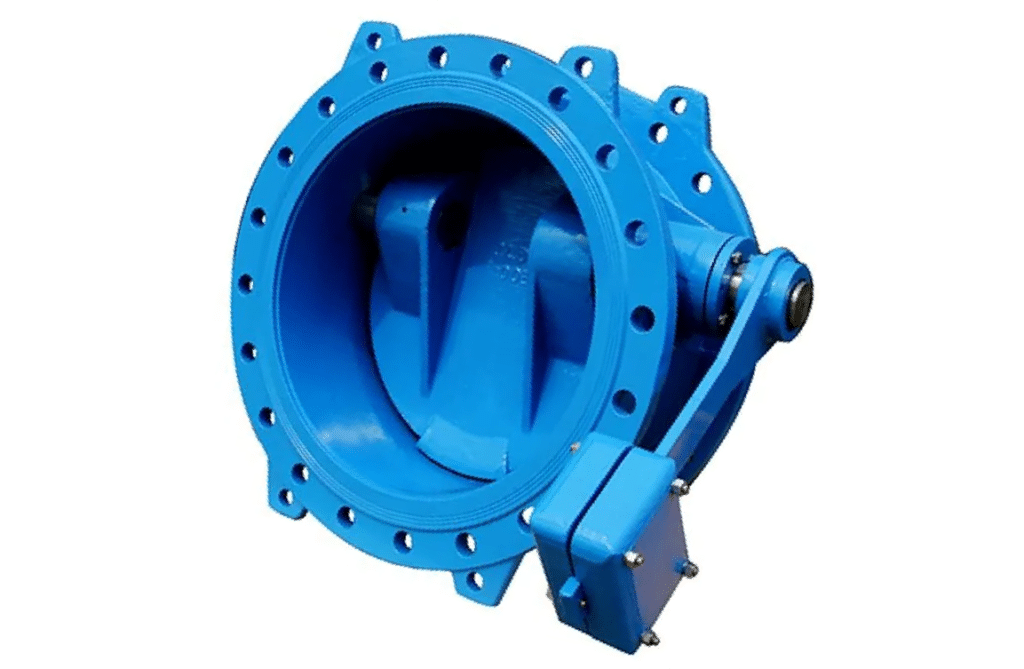
APPLICATION
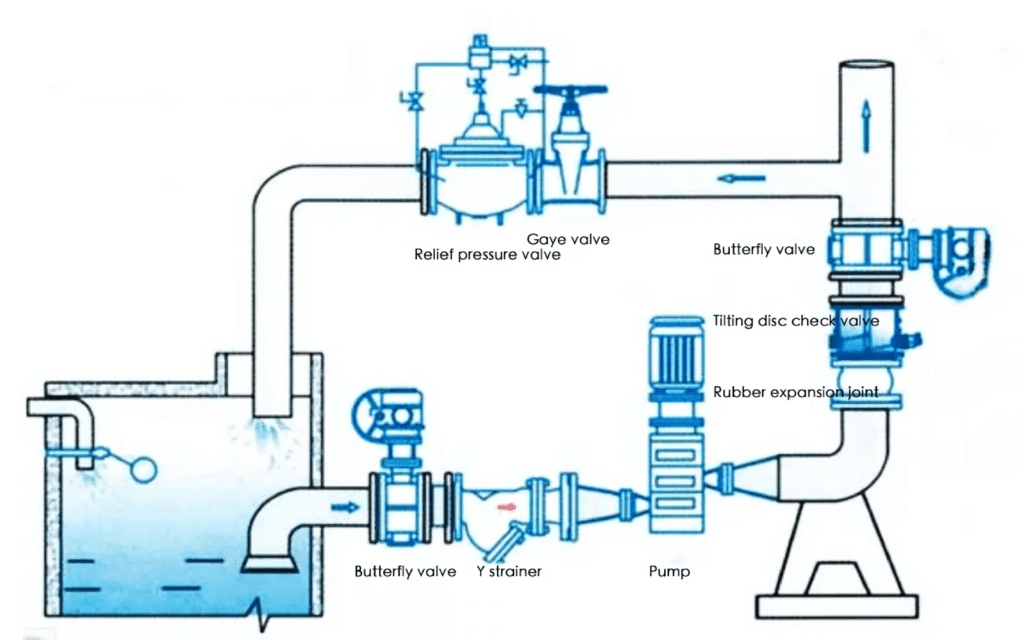
As shown above, the tilting check valve is installed at the back of the pump. When the pump is working, the valve plate of the tilting check valve opens under the action of water pressure, and when the pump stops working, the valve plate of the tilting check valve closes to prevent the water from flowing back wards into the pump and causing the pump impeller to reverse, and because the tilting check valve closes at a slower and more stable speed than the swing check valve, it prevents water hammer from occurring, thus protecting itself from damage and the stability of the entire pipeline.
Tilting disc check valves are widely used in systems requiring prevention of backflow, such as pump outlets, piping systems, boiler feedwater systems, etc.
With its unique structure and operation, the tilting disc check valve can effectively control the one-way flow of the fluid, prevent the medium from backflow, and protect the normal operation of the system.
ADVANTAGE
LOW PRESSURE DROP
_
Due to the design of the disc, the tilting disc check valve can provide a larger flow area when open, reducing the pressure drop.
HIGH RELIABILITY
_
The tilting disc check valve has a simple structure, fewer moving parts, and is relatively easy to maintain and operate.
WIDE APPLICATION
_
Suitable for various liquid and gas media, commonly used in water supply, petroleum, chemical industry, etc.
TILTING CHECK VALVE COMMON PROBLEM AND MAINTENANCE
Tilting disc check valves may encounter some common problems during use. Here are the causes of these problems and their solutions:
LEAKAGE
_
● Cause
The sealing surface between the disc and seat wears or has impurities, causing the seal to be non-tight; improper installation may also cause the valve body to deform.
● Avoidance
Regularly check and clean the sealing surface, ensure proper installation, prevent impurities from entering the valve body. Choose the appropriate valve material to meet specific working conditions.
VALVE STICKING
_
● Cause
The disc may corrode or be affected by dirt during frequent opening and closing, causing sticking; misalignment during installation can also cause valve sticking.
● Avoidance
Regularly maintain the valve, remove dirt and corrosion; ensure proper valve alignment during installation to prevent the disc from rubbing against the valve body.
PREMATURE WEAR
_
● Cause
The impact of impurities or particles in the fluid on the disc and seat, frequent switching operations, and the corrosiveness of the fluid medium are too strong.
● Avoidance
Install filters or strainers in the pipeline system to reduce impurities and particles; select wear-resistant and corrosion-resistant materials; optimize operational conditions to avoid frequent opening and closing of the valve.
NOISE AND VIBRATION
_
● Cause
The flow rate of the fluid is too high, causing the disc to vibrate; the valve design is not suitable for specific working conditions.
● Avoidance
Select the appropriate valve design and size based on specific working conditions to reduce the flow rate; install a muffler or take other measures to reduce vibration.
SUMMARY
_
To avoid and solve common problems with tilting disc check valves, regular maintenance and inspection are necessary, and the appropriate valve material and design should be selected based on specific working conditions. Ensure correct alignment and sealing during installation, and install appropriate filtration equipment in the pipeline system to effectively reduce valve problems.

